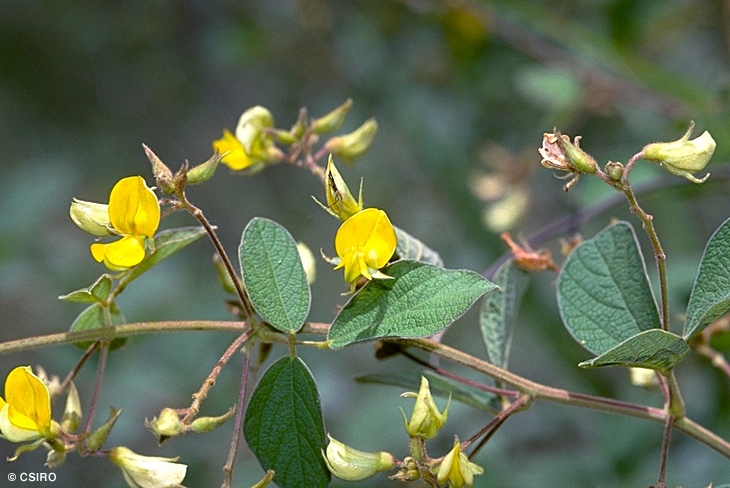Australian Tropical Rainforest Plants - Online edition
Cajanus reticulatus (Aiton) F.Muell.




Mueller, F.J.H. von (1883) Systematic Census of Australian Plants : 41.
Nalta Jute; Jute; Tossa Jute; Tussa Jute
Usually flowers and fruits as a shrub about 1-1.5 m tall.
Compound leaf petiole conspicuously grooved on the upper surface. Middle leaflet usually larger than the lateral leaflets and on a longer stalk. Leaflet blades about 30-80 x 25-50 mm, upper surface bullate, both the upper and lower surfaces clothed in pale hairs. Small yellow glands visible with a lens on both the upper and lower surfaces of the leaf blade.
Pedicels about 5-6 mm long, clothed in long erect hairs. Calyx very hairy, tube about 3-4 mm long, lobes about 6-10 mm long. Petals: standard about 12 mm long; keel about 13 mm long. Stamens 10, the filaments of nine stamens fused to form a tube about 9-11 mm long open on one side, one stamen free. Ovary elongated, densely hairy. Style glabrous, about 7-10 mm long.
First pair of leaves simple, opposite, leaf blades about 12-18 x 7 mm, upper and lower surfaces clothed in pale hairs and small yellow globular glands. Third leaf trifoliolate. Stipules hairy, about 2 mm long. Seed germination time 13 days.
Occurs in WA, NT, CYP, NEQ, CEQ and southwards as far as south-eastern Queensland. Altitudinal range in northern Australia from 400-1000 m. Usually grows in open forest but also found in vine thickets and monsoon forest. Also occurs in New Guinea.
A very variable and widely distributed species. Apparently not palatable to stock.
Roasted roots were eaten by Aborigines. Hacker (1990).





